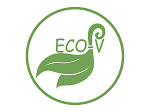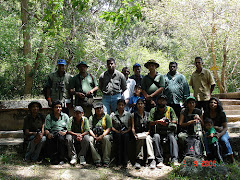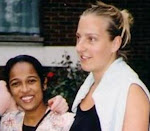This is the third update from Melbourne on our activities and networking on ECO-V future work. Its four months since we came to Melbourne and settled down in nice suburb of Fairfield, Northcote. It is winter (coldest winter in 4 years!!) here now and temperature hits 3C sometimes in the morning and night. On and off rain (some say they are getting rain after ten years) and the high wind keeps you really cold and chilly. But we have to say this is much better than both of us expected. Kids love the new environment and they perform well in the school too. We also had the time to meet some of Thushara’s friends in Melbourne who were at school and school hostel with him during school days (meeting most of them after twenty years).
We are mainly concentrating on networking for the future of ECO-V while we are here and planning the activities for 10th Anniversary of ECO-V next year. We are really happy about the way Harsha and the team working in Sri Lanka keeping the ECO-V live in our absence. I will be speaking to volunteers on 15th August from here via skype when they meet for the first Thiresi meeting after ending the war last year (We stopped the meetings during the heights of the war due to on and off bomb blasts in the public transport in 2009).
Jim Crosthwaite (Biodiversity Policy and Programme officer at department of Sustainability and environment) whom I met on the road became the first “Friends of ECO-V” in Melbourne and now continuously helps me to develop networking in Melbourne with different environmental action groups. We are planning to create a project on climate change awareness in Sri Lanka with the support of different organizations and individuals in Melbourne.
Last month I had an opportunity to work few days in Department of Sustainability and Environment (DSE) in Victoria (http://www.dse.vic.gov.au/dse/index.htm) due to Jim’s recommendations where I met lot of people on different aspect of environment conservation. I also delivered a speech at Arthur Rylah Institute for environmental research at DSE (http://www.dse.vic.gov.au/dse/nrenari.nsf/Home+Page/DSE+ARI~Home+Page?open) on my work where most of the DSE members participated and gave me lot of inputs to my work here. The next presentation by me will be at their head office on the 13th of August.
We also participated at a meeting in Darebin Climate Action group (Darebin is the local council we reside) where we listen to David Spratt who co-authored the book on climate change called “Code Red” with Phillip Sutten (http://www.scribepublications.com.au/book/climatecodered). Incidentally Phillip is in the same suburb as us in Fairfield and Jim introduced him to me and he is keen to look at our proposal on climate change awareness project in Sri Lanka and advice on it.
I visited Centre for education and research in environmental strategies (CERES ) (http://www.ceres.org.au/) with Kids and Pascal another environmental activist I met during a tree planting programme. This trip gave me an idea of how environmental education groups work here in Australia. She took me to Merri Creek management Committee (MCMC - http://www.mcmc.org.au/) and got familiar about their wonderful efforts in environmental conservation.
I am also involved in writing a column on environment in Ariona (www.ariona.com.au) a life style e-magazine in Australia and first edition was launched last week. You all can read my article under Nature and us. (http://www.ariona.com.au/magazine/index.php?option=com_content&view=article&id=198:kanchana-weerakoon&catid=78:environment&Itemid=315 )This is launched and coordinated by Dimuthu Dias Mendis, a Sri Lankan who is also an environment enthusiast like us.
Well we wrote this with many web links. But thought of mentioning it for anybody who likes to explore more about these wonderful organizations/places that we are involved with.
Will come back to you with more updates soon.
Metta
Thushara and Kanchana







